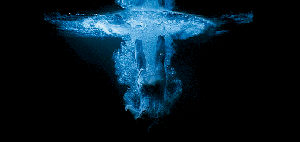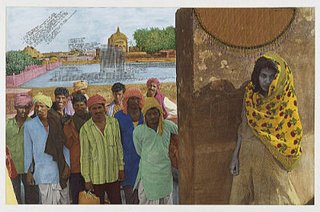 Books radiate imagination. Studied and worn, they carry the imprints of time, gathering associations and furnishing our intimate lives. The book-lined walls of the Heide I library contain a wealth of ideas and associations that inspired Kim Donaldson’s most recent exhibition project, Between the lines. Adopting the roles of researcher, editor, artist and historian, the exhibition is the result of Donaldson’s three-year enquiry into the contents of the library, and the lives and histories inscribed on the pages of its volumes.
Books radiate imagination. Studied and worn, they carry the imprints of time, gathering associations and furnishing our intimate lives. The book-lined walls of the Heide I library contain a wealth of ideas and associations that inspired Kim Donaldson’s most recent exhibition project, Between the lines. Adopting the roles of researcher, editor, artist and historian, the exhibition is the result of Donaldson’s three-year enquiry into the contents of the library, and the lives and histories inscribed on the pages of its volumes.
The present Heide I library is an accumulation of books that belonged to John and Sunday Reed (who occupied the house from 1934–1967, returning in 1980–1981), and to their family and friends who have lived there periodically, or who have later gifted books to the Museum. In Between the lines, Donaldson offers a distilled view of this collection, choosing details from a selection of books to re-create as paintings. During her visits to the library, Donaldson’s methods of research combined careful perusal with opportune findings; selecting books not only for their notable authors or subjects but also for the affinities she felt with the colours and textures of certain covers, or the handwritten notes she discovered inside. The painted covers, illustrations and inscriptions give form to her experience, providing an index of the books she has accessed and evidence of those who have turned the pages before her; revealing personal interests, scholarly exchanges, and dedications of love and friendship.
In the layout of the exhibition, Donaldson makes playful reference to Heide I as a former home and its current incarnation as a museum. Paintings are placed throughout the rooms of the house, their demarcation and groupings based on her systems of categorisation. The informative ‘How to…’ and ‘The complete guide to…’ books form certain groupings, while other works are given a ‘practical’ placing within the house: Chez Reed Menu (2006) rests on the mantelpiece in the former dining room, and Algerian Apperitive [aperitif] (2006) is placed in the library, evoking memories of the Reeds’ pre-dinner gatherings. Portraits of John and Sunday and their cats, selected from Heide’s Collection, hang in the bedroom and canvases are stacked against the walls of the house, mimicking the Reeds’ unusual methods of art storage. Alongside Donaldson’s recollections of times past, Between the lines is also a commentary on her explorative journey and recent presence in the house. A painted floor plan, a re-creation of the cover of the current Heide I Guide Book, and a painting created especially for reproduction on the cover of the exhibition catalogue are interleaved with paintings of the books and ephemera she uncovered on the site. The history of Heide is enfolded with the present in Donaldson’s work. She reminds us of the meanings books have and the use we make of them, not only in reading, but in the inspiring presence they timelessly provide.
 Bill Viola, one of the worlds leading video artists, traveled to Japan in 1980 on a one-year arts fellowship to study and experience first hand its cultural traditions and religions. He extended his stay by six months to work at Sonys Atsugi Research Center where he gained access to the most advanced video technology of the time. The influence of both experiences transformed his work.
Bill Viola, one of the worlds leading video artists, traveled to Japan in 1980 on a one-year arts fellowship to study and experience first hand its cultural traditions and religions. He extended his stay by six months to work at Sonys Atsugi Research Center where he gained access to the most advanced video technology of the time. The influence of both experiences transformed his work.









